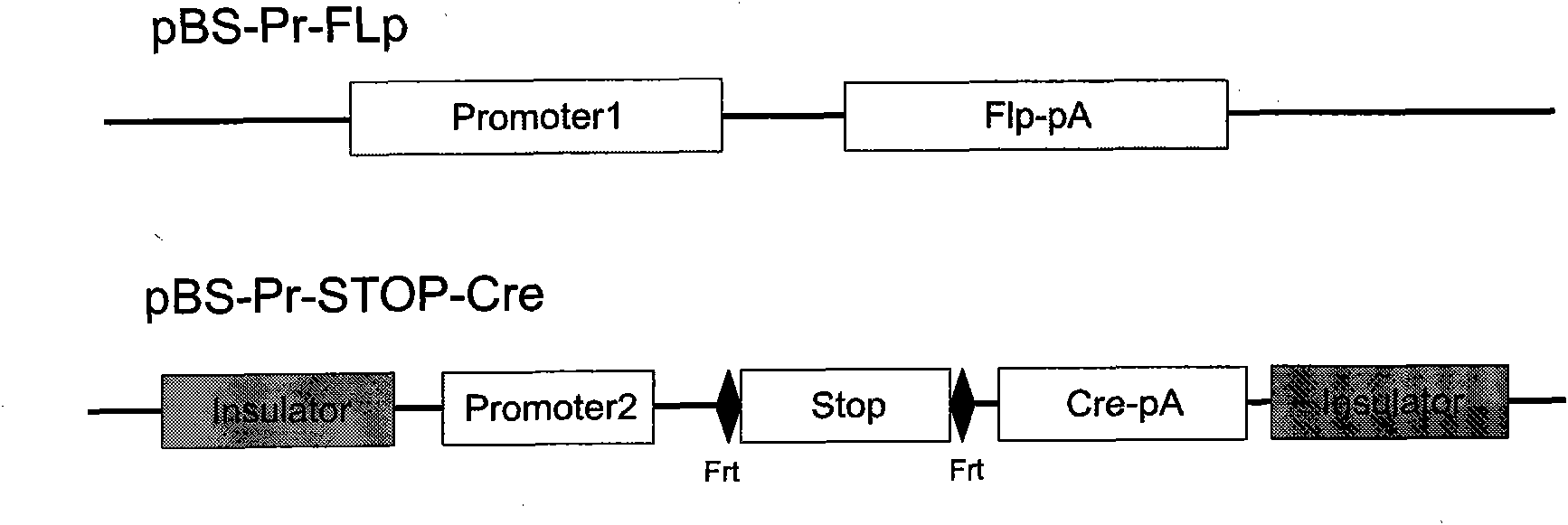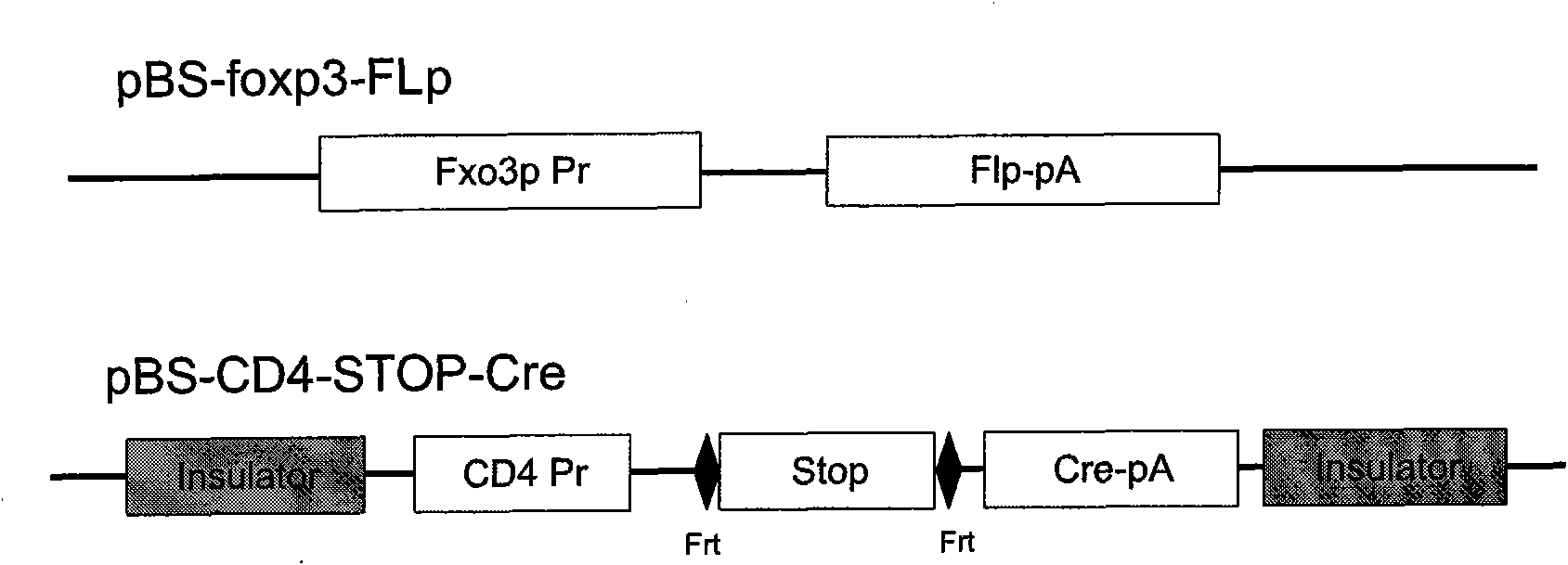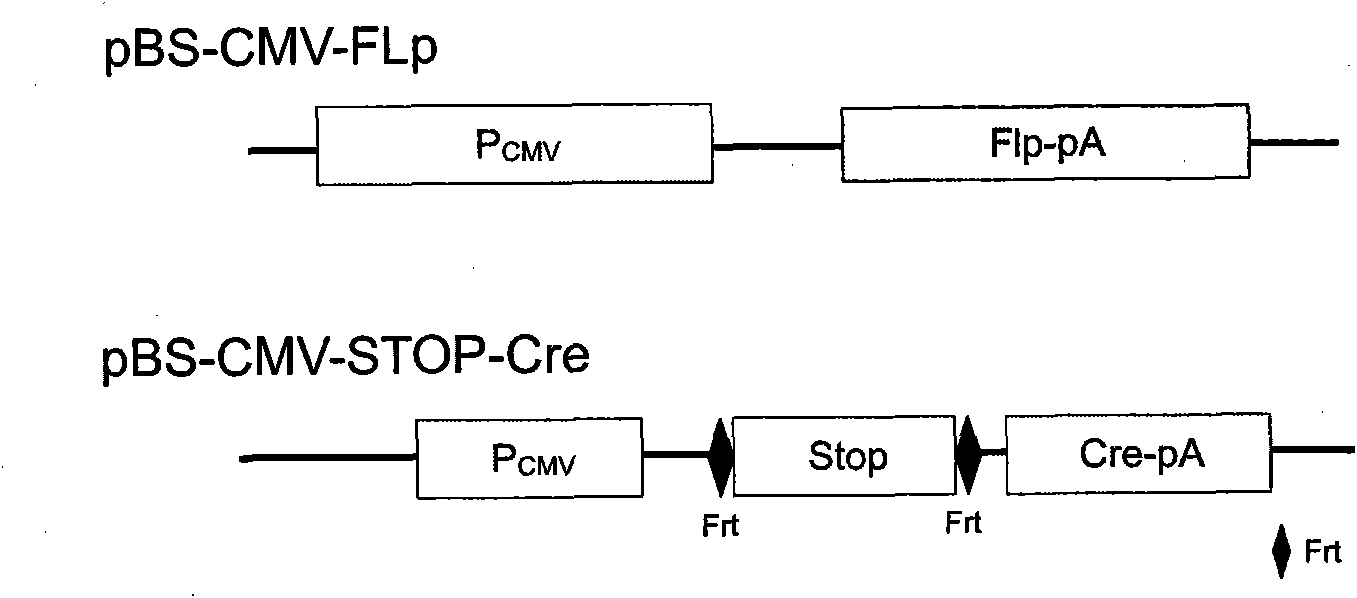Embedded tissue-specific expressed Cre tool mice built by utilizing Flp-Frt system
A flp-frt, cd4-stop-cre technology, applied in the biological field, can solve the problems such as not many Cre transgenic tool mice, incomplete tissue-specific promoters, affecting expression, etc.
- Summary
- Abstract
- Description
- Claims
- Application Information
AI Technical Summary
Problems solved by technology
Method used
Image
Examples
Embodiment Construction
[0044] One, the construction of the tool vector pBS-Pr-Flp of eukaryotic expression Flp recombinase (flow process sees Figure 4 ), including the following steps:
[0045] Step 1, with Flp-ER (129S4 / SvJaeSor-Gt (ROSA) 26Sor tm1(FLP1)Dym / J, stock No.003946, Jackson Laboratory) mouse genome DNA was used as a template, and the Flp fragment was amplified by PCR. Primers are: FlpF:CG GGATCCGCCGCC ATGGGGATGCCACAATTTGATATATTATG; FlpR:CG ACGCGT TTATATGCGTCTATTTATGTAGG. The underlined part is the restriction site introduced by PCR. The PCR product was connected to pMD18-T and identified by enzyme digestion. The clone with the correct enzyme digestion identification result was sent to Jinsite Technology (Nanjing) Co., Ltd. for sequencing to confirm the correctness. After the Flp fragment was ligated from pMD18T with restriction endonucleases BamHI and MluI, the Flp fragment was substituted for the Cre fragment in the pBS185 plasmid (Gibico), and the digestion was verified to be...
PUM
 Login to View More
Login to View More Abstract
Description
Claims
Application Information
 Login to View More
Login to View More - R&D
- Intellectual Property
- Life Sciences
- Materials
- Tech Scout
- Unparalleled Data Quality
- Higher Quality Content
- 60% Fewer Hallucinations
Browse by: Latest US Patents, China's latest patents, Technical Efficacy Thesaurus, Application Domain, Technology Topic, Popular Technical Reports.
© 2025 PatSnap. All rights reserved.Legal|Privacy policy|Modern Slavery Act Transparency Statement|Sitemap|About US| Contact US: help@patsnap.com



